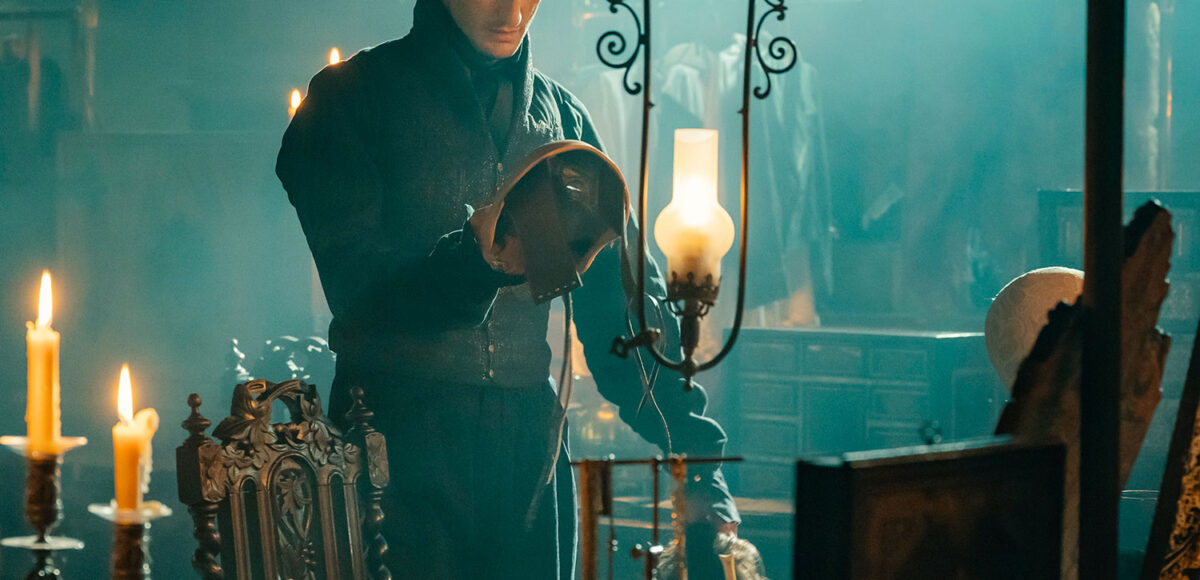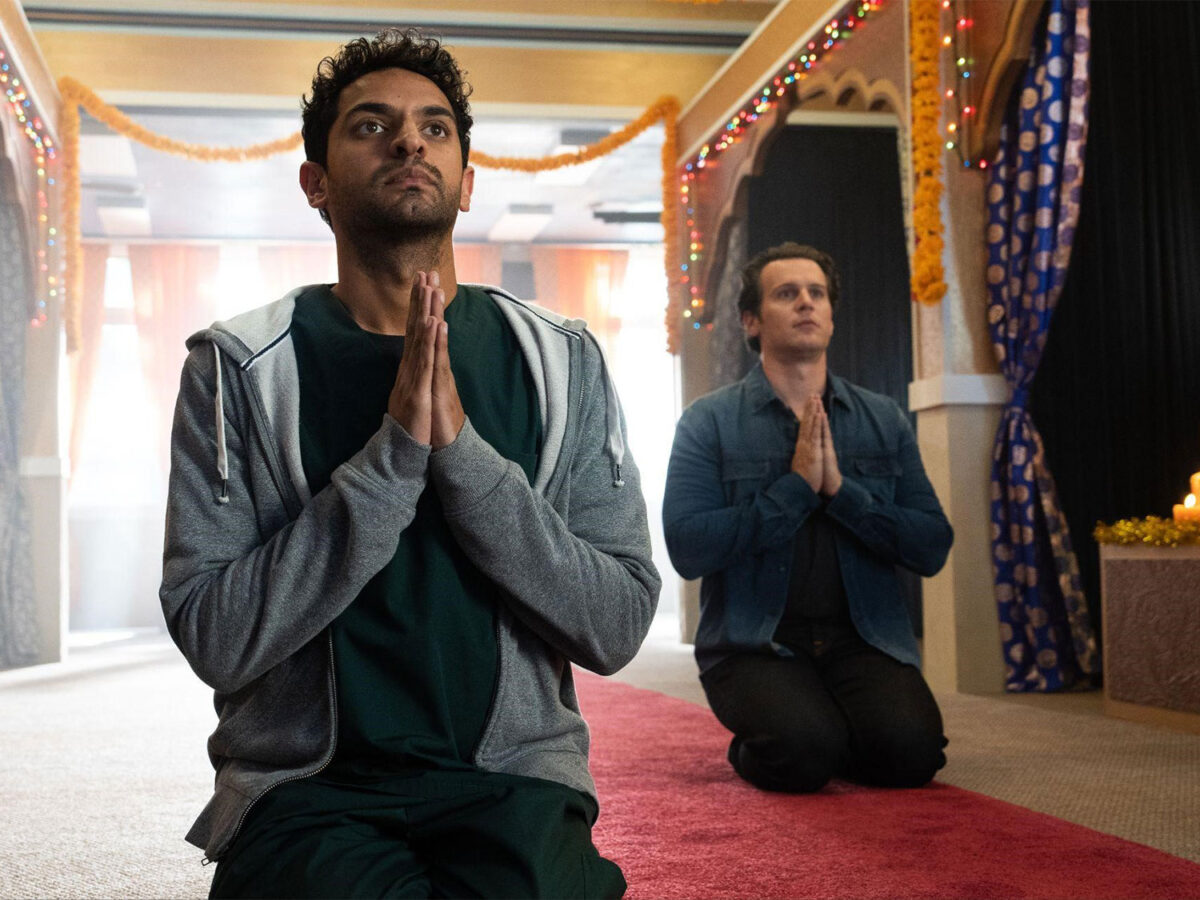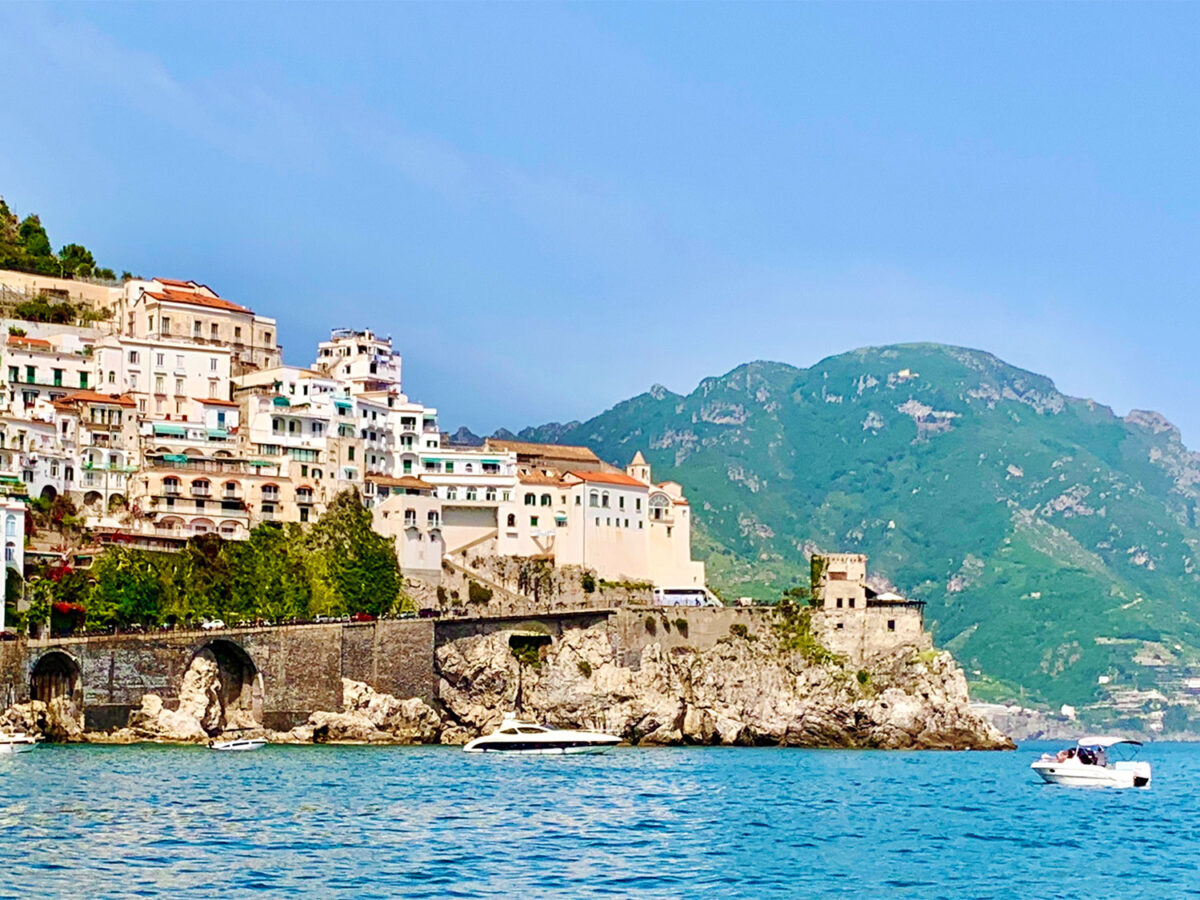“The Count of Monte Cristo,” a new edition of this oft-told tale, adapted and directed by the team of Matthieu Delaporte and Alexandre de la Patellière, is a sweepingly romantic adventure full to overflowing with love, hate, greed, betrayal, revenge and resurrection. The villains are painted in the blackest blacks, but what makes it most interesting are the innocent victims who propel so much of the action and the complex and conflicted hero who is both valiant and vengeful.
It is the best of times and the worst of times in France. Napoleon is exiled to Elba and the royals are back in power. But that tenure is in danger because of rumors that Napoleon’s legion of followers are planning his return.
There has been an accident at sea and a ship is on fire, its passengers lost with the exception of a woman floundering in the water. Captain Danglers has ordered his crew to charge ahead and ignore any survivors from the other ship. Sailor Edmund Dantès, ignoring the order, dives into the water and rescues the woman. Enraged that his orders were disobeyed, he restricts the woman, Angèle, to cramped quarters, commandeers her belongings, including a hidden letter, and tells Dantès that his career is over. The letter? A missive signed by Napoleon to his followers in France. The woman? A spy and anti-royalist. Danglers will find a use for that letter and will profit handsomely. As for Dantès, things don’t go as planned. The owner of the fleet is impressed by his bravery and promptly fires Danglers and replaces him with Dantès, making the 22-year-old Dantès one of the youngest captains in France. Seething, Danglers is unhinged but with a plan to even the scores.
Dantès, a man of humble origin, is thrilled that he now has the means to marry the woman of his dreams, Mercédès, the aristocratic daughter related to the owners of the estate, the Morcerfs, for whom the Dantès family has served for years. It was Mercédès’ relatives, the Morcerfs, who sent Dantès to the Naval Academy and will be thrilled with his promotion; less thrilled, perhaps, with the engagement of their daughter to the son of a servant. But love should conquer all and even Mercédès’ cousin, Fernand de Morcerf, seemingly supports him, all the while secretly fuming with jealousy.
To round out the trio of anti-Dantès schemers is Gerard de Villefort, the king’s prosecutor. Angèle, rescued from drowning by Dantès, is Villefort’s sister and a follower of Napoleon, something that would derail his promising career with the royalists. When Danglers appears with her letter, Villefort is ensnared in a trap, one where Danglers offers him a convenient out benefiting them both. Villefort must make sure that no one discovers who was carrying it, and when Danglers offers the prospect of framing Edmund Dantès with the letter, he jumps at it.
The King’s guards are sent to the church where Dantès and Mercédès are about to say their wedding vows, taking him away to the prosecutor’s offices. Proclaiming to be convinced of his innocence, Fernand rides to his rescue. Instead, Villefort convinces Fernand that bringing Dantès to trial will sully the Morcerf name. Morcerf immediately changes sides and swears in a letter that he knew Dantès to be a follower of Napoleon and a traitor to France. Rather than put him before a jury, Villefort has Dantès spirited away to the Chateau d’If, an impregnable prison fortress on an island off the coast of Marseilles, never to be seen again, or so they all assume.
Already imprisoned for four years, ragged, starving, without hope, Dantès is contemplating suicide when he hears noises behind one of his walls. A prisoner in the adjacent, seemingly impenetrable, cell has broken through, mistakenly thinking that he was about to reach the outer wall to the sea. He is the Abbé Faria, imprisoned when, as the last guardian of the fortune amassed by the Knights Templar, he refused to divulge its location. He had been digging for years to arrive at Dantès cell and, with Dantès’ help, and if they’re lucky, it might only take another 10 years to make it to the outside wall and freedom. Recognizing that Dantès is poorly schooled, he offers to teach him while they work. It will be a university of one where he will learn modern and ancient languages, philosophy, history, mathematics and science. And when they reach their goal, Faria has promised to split the hidden spoils with him, making him rich beyond measure.
But this is less than an hour into the movie because it’s not about his escape, it’s about what he does afterwards. Edmund Dantès has understood one thing perfectly. Revenge is a dish best served cold. As the mysterious Count of Monte Cristo, returning to Paris where all his targets now live, he is sought after by one and all. Wealthy, educated, sophisticated, aristocratic, what he has in store for his enemies will surprise even them. Dante’s wiles and long-range planning beg the question, how much is enough retribution or can it ever be enough?
Written by Alexandre Dumas, a prolific author of adventure novels, denigrated by academics and revered by readers of all ages, he was almost as interesting as the characters he wrote. His father, Thomas-Alexandre, was the illegitimate product of a slave and a nobleman, the Marquis de La Pailleterie. The Marquis took Thomas back to Paris to educate him, but in a parting blow to his concubine and their daughters, he sold them to another. Thomas, ineligible to inherit the estate of the marquis, was granted his freedom and sent to a military school. He started his career in the army as a lowly soldier, rising to the rank of general at the age of 31 under Napoleon. Upon his early death in 1806, Alexandre, aged 4, and his sisters would suffer greatly until he began his writing career, first as a journalist and then as a playwright. His plays and minor works, works that were written with collaborators, brought him wealth but nothing like the acclaim and fortune he received for his most important novels, “The Corsican Brothers,” “The Three Musketeers” and “The Count of Monte Cristo.” With the money he earned from the latter two, he built a country home outside Paris and called it the Château de Monte-Cristo.
Dumas wrote in an almost cinematic style. His books were page-turners with scenes that were visual, exciting and visceral, making them easy to translate to the big screen. And they have been, over and over again since 1905. De la Patellière and Delaporte have taken minor liberties with some of the characters but those changes are almost seamless in terms of the original story.
No one does period drama better than the French. The British come close and Americans get it right more often than not, usually using locations in Czechoslovakia and Hungary that double for 18th and 19th-century Western Europe; but nothing like the French who have preserved more of their landscape and architecture. This “Count of Monte Cristo” is a feast for the eyes using existing chateaux and surrounding grounds to lend an authenticity that is hard to duplicate. Employing sleight of hand, the hair and makeup department create character and plot points with wigs and masks. The costuming is period perfect befitting the wealth portrayed by the main characters and the rags of the wretched, especially those of Edmund as he suffers in the prison fortress. The cinematography by Nicolas Bolduc is peerless, capturing the lushness of the countryside and the austerity of the unlit prison.
But this is nothing without the superb actors, many of whom are stars of the Comédie Française, attesting to their theatrical experience and the subtlety they bring to their roles. Of special note are the villains. Bastien Bouillon brings an ambivalence to the evil narcissism of Fernand de Morcerf, whose betrayal of Dantès may be the greatest. Patrick Mille, as Danglers, has the self-satisfied air of a man who cheats, schemes and is unapologetic about his lack of moral compass. It is Laurent Lafitte as Villefort who brings a gravitas to the prosecutor who distrusts all and, in having the most to lose, treads more carefully around the others, always setting up a fall guy whenever possible. But there is no Count of Monte Cristo without the breathtaking performance of Pierre Niney, who brings a believability to his Edmund Dantès who uses all the colors of an emotional palette and his expressive eyes to tell a story even when there is no dialogue. He is a veritable marvel of depth, character and believability.
If you like a good story, there is none better than this must-see movie.
In French with English subtitles.
Now playing at the Laemmle Royal, opening wider on Jan. 3.







